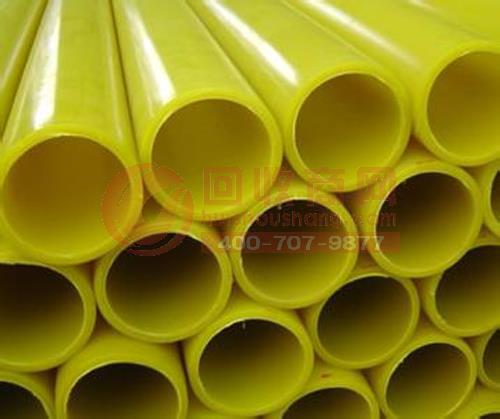Enhanced modification: The tensile strength of recycled PP is relatively low. The general product is about 18~25MPa. After being reinforced with short glass fiber (SGF), the tensile strength can reach 30~35MPa. In order to improve the interfacial properties of fiber and resin, commonly used coupling agents such as KH550, KH560, KH570, etc., the amount of coupling agent is generally 0.2% to 1.5% of the fiber content, it is necessary to test and determine for different situations. Chlorination of polypropylene: Recycling PP can also be chlorinated like recycled PE, which has a wide range of applications. For example, aPP can be chlorinated to obtain chlorinated aPP (CaPP), which has excellent bonding properties and can be used to bond binders for PE, PVC, Pa, metal, etc., such as packaging composite film, double A binder such as a layer PP film, a PP film-paper, a PP film, or an aluminum foil. In addition, CaPP can also be used as a processing aid for coatings, printing inks and polar resins. Graft modification of polypropylene: The chemical modification of polypropylene also has copolymerization modification such as grafting and block. The purpose of graft modification of polypropylene is to improve the adhesion or solubilization of polypropylene with metals, polar plastics and inorganic fillers. The grafting monomers used are generally acrylic acid and its esters, maleic anhydride and its esters, maleimides and the like. The grafting method includes: 1 solution method, adding a peroxide initiator to the solvent for copolymerization; 2 radiation method, grafting under high energy rays; 3 melt-mixing method, in the presence of peroxide, in a molten state The kneading, grafting, is often carried out in a twin-screw extruder. The properties of the graft modified polymer material are related to the physicochemical properties of the graft, and also related to the content of the graft, the length of the graft chain, etc. The basic properties are similar to those of polypropylene, but the compatibility with polar polymer materials, inorganic materials, rubber, etc. can be greatly improved. The crystallinity and melting point of grafted PP decrease with the increase of graft content, transparency and low temperature. The heat sealability is improved. Crosslinking modification of recycled polypropylene: The recycled polypropylene can also be cross-linked modified like polyethylene, and the modification mechanism is similar to that of the polyethylene described above. Catalytic cracking and thermal cracking of polypropylene: Polypropylene is cracked at about 380 ° C for thermal cracking and catalytic cracking. Using a silicon/aluminum powder (SiO 2 /al:03) as a catalyst, the catalyst can be contacted with the gas phase and liquid phase of the cracked product. Studies have shown that by liquid phase contact catalyst method, 69% liquid product can be obtained, with a boiling point of 30~270 °C, 2·C6 to n-C1s paraffin oil; gas phase contact catalysis, can obtain 54% (mass fraction) liquid product And the speed of getting the product is much lower. Studies on both catalytic and non-catalytic degradation have shown that the unsaturation of the catalytically degraded liquid product is much higher than that of the non-catalytic degradation, and the cleavage products are also different. Polypropylene decomposes under the action of a catalyst at around 40013 to produce a series of substances. Studies have shown that the increase in catalyst content can increase the liquid yield, while the amount of gas and residue is reduced; the type of catalyst has little effect on the yield and composition. The temperature has an effect on the cracking reaction, the temperature is increased, the liquid forming rate is increased, and the percentage of the residue is lowered, and the gas amount is slightly lowered. The cracking atmosphere has an effect on the cracked product, and cracking in a water vapor atmosphere can increase the liquid formation rate. In addition, the mixing of other waste plastics did not reveal products other than the cracking products of the respective polymers, that is, no interaction such as a synergistic reaction occurred in the cracking reaction. Under medium temperature cracking conditions, the liquid formation rate is about 70%, and the appropriate improvement technique can increase the liquid formation rate to about 85%. Schindler Elevator Spare Parts
Schindler Elevator Spare Parts, Schindler Elevator Parts
Schindler was founded in 1874 in Lucerne, Switzerland, and is one of the world`s leading providers of elevators, escalators, and moving walks, as well as maintenance and modernization services. The Group has over 1 000 branch offices in more than 100 countries, as well as production sites and research and development facilities in the US, Brazil, Europe, China, and India.
Schindler manufactures, installs, services and modernizes elevators, escalators and moving walks for almost every type of building requirement worldwide. The company specializes in the latest-technology engineering, as well as mechanical and microprocessor technology products designed and rigorously tested for safety, comfort, efficiency and reliability.
Inspired by the vision of being the best service provider in the industry for its customers, Schindler will continue in the future to develop highly innovative and user-friendly mobility solutions and to deliver these to the world market.
Schindler products can be found in many well-known buildings throughout the globe, including office buildings, airports, shopping centers/retail establishments and specialty buildings.
Capacity: 400 kg - 1'125 kg, 5 - 15 passengers
Capacity: 630 kg - 2'500 kg, 8 - 33 passengers
Global high-rise solution for your landmark building
Schindler Elevator Spare Parts, Schindler Elevator Parts CEP Elevator Products ( China ) Co., Ltd. , https://www.zjfullelevatorreplacement.com
Schindler 3300
Travel height: up to 60m and 20 floors
Speed: 1.0 m/s and 1.6 m/s
Schindler 5500
Travel height: up to 150 m and 50 floors
Speed: 1.0 m/s up to 3.0 m/s MMR and MRL
Schindler 7000
Single- and double-deck elevators
Capacity: 4'000 kg (single-deck) or 2x 2'250 kg (double-deck)
Travel height: up to 500m
Speed: 10 m/s